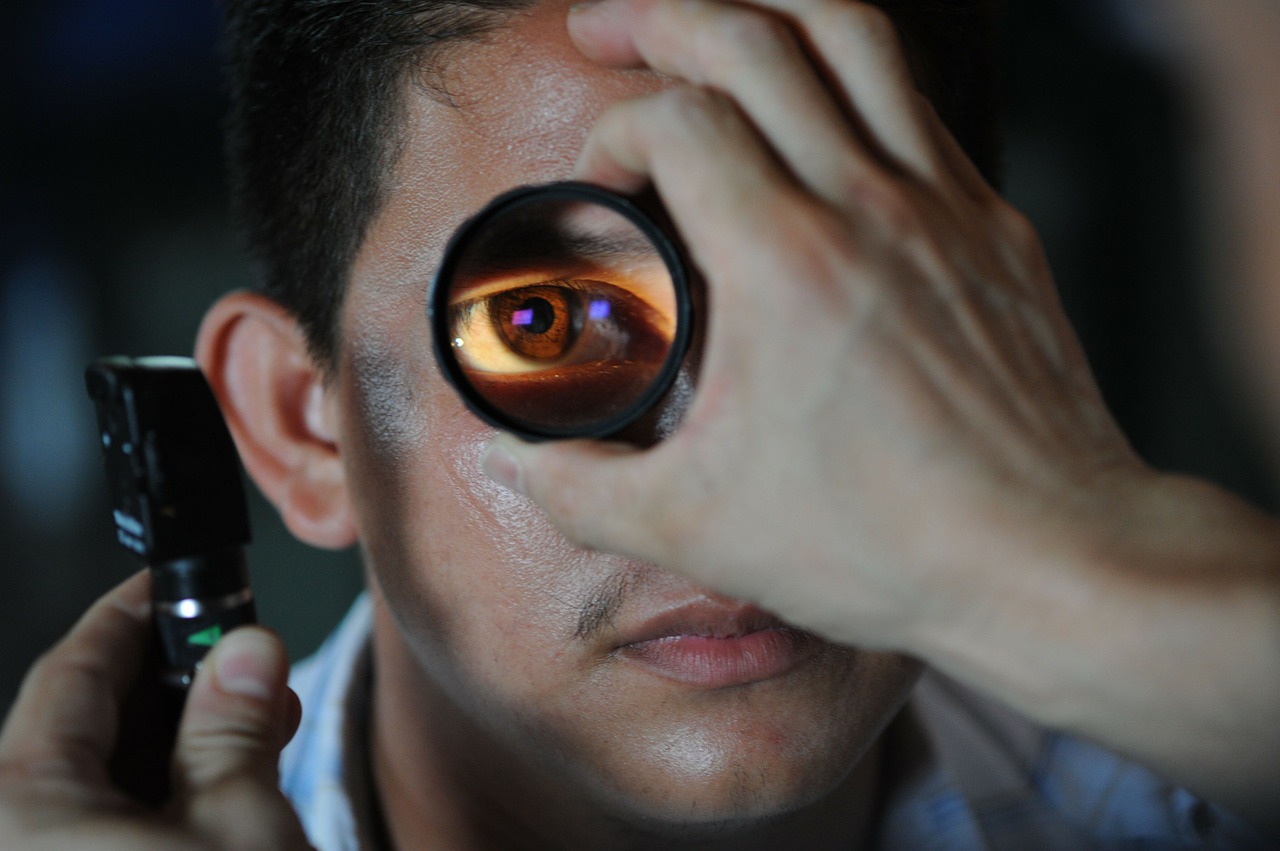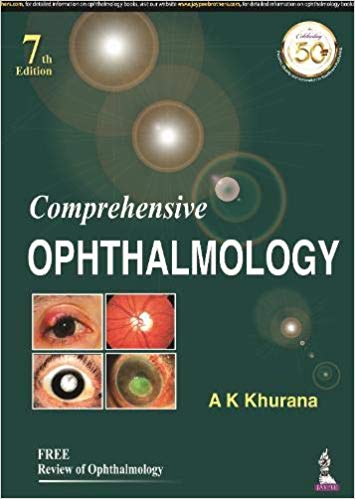
Representative image. Image by David Mark from Pixabay
Poetically, the eyes have been described as the windows to the soul!
Interestingly, the eyes are also very accurate and indicative mirrors of the health and wellness quotient and are indeed known to be used as clinical, biochemical and physiological benchmarks of the holistic functioning of the body.
They are obviously associated with vision and eyesight and are regarded as the primary sensory organ but aside from this they are totally devoted to bodily wellbeing and security because they keep the human subject aligned to his environment.
Interestingly, they are “barometers of distance, shape size and texture of things even before we touch them. This is very significant in the case of food. Sensory evaluation of food is gravitated through eyesight though of course aided by other senses. Hence, it is a very important exercise to understand the entire plethora of miraculous properties that our eyes possess and the manner in which they should be protected and nurtured.
The seriousness of diseases and abject clinical conditions can be certainly avoided by gainfully understanding the intricacies of eyesight and the proper care of the eyes!!
The technical value additions to this article are the gainful outcome of a very enriching conversation with a very dynamic and committed ophthalmologist, Dr.Amit Nene, Mumbai. He was extremely eloquent in sharing his vast experience in the arena of eye health. It is certainly a lot more than an Eye of the Needle in more ways than one.
Today, the use of eyes is quite a lot devoted to the wizardry of technology and gadgets. It follows that radiation and health- detrimental emissions were a matter of grave concern especially due to their role in eye health and wellness. The gadget manufacturers have been made aware of the bandwidth of effects and now most high-quality gadgets come with a protective screen guard making it safe to use and conducive to health maintenance.
However, no discussion about eyes and eyesight can be complete unless the very valid point of blue light emission from smartphones and gadgets is touched upon.
What is the blue light emission from smartphones? Is it harmful?

Image by SplitShire from Pixabay
Blue light in our normal environment is not dangerous. Scientists, however, say that blue light from smartphones and devices such as laptops can damage vision and can speed up blindness when used in the night.
Blue light has a shorter wavelength and more energy can damage the eyes especially when you use these gadgets in the dark. In the day time, the blue light output from these devices is very low and has no major impact on the eyes.
There is no evidence that the blue light from gadgets such as a smartphone can damage the eyes when used in the day.
The most important aspect of this blue light is the unquestionable role it plays on the pivotal hormone, melatonin which in turn governs sleep-wake cycles and naturally the circadian rhythm. Blue light has a proven role in the inhibition of melatonin production and it does so with twice the intensity as other wavelengths of lights. If melatonin is not present in the body, the person’s metabolic rate continues to be elevated and he finds it difficult to fall asleep.
During the day, melatonin is suppressed to promote alertness in a person’s profile but if the person uses his smartphone or other electronic gadgetry just before he sleeps, he undergoes spells of sleeplessness or agitated and sporadic sleep both of which are totally detrimental to good health and wellness. Experts in eye science, recommend periodic breaks, and a period of preliminary restfulness and quiet, away from electronic gadgets, before a person sleeps to promote wellbeing.
If the eyes are rested just by lightly shutting them for five minutes and deep breathing is also carried out, then this is known as Nidra Yoga and is very conducive to a better quality of sleep, improved immunity, mental peace and optimised biochemical profile in the person.
Eye health matters
Dr.Nene was very emphatic that eye make-up, avitaminosis and a poor imbalanced diet, lenses and foreign objects, sleep-wake cycles, ageing and state of chronic disease are all factors which play a very major role in eye health and the efficacy of eyesight.
The care and continued nurturing of one of the most beautiful organs of the human body is largely a DIY( Do –It –Yourself), a routine which should ideally be lifestyle integrated. This includes protracted eye hygiene including frequent eye washing and splashing using water and eye yoga.
It is worth noting that if disease conditions like Diabetes are mismanaged they can definitely lead to Diabetic Cataract and blindness. Additionally, the lack of micronutrients in the diet may result in Xerophthalmia( drying of eyes) and Nyctalopia (night-Blindness). Oily fish, vitamin A and vitamin C can all help to preserve good eyesight.
Eye yoga is a wonderfully doable and very convenient method of exercising our eyes at any time of the day or night regardless of age, gender and general location of the person. The exercises which form a part of eye yoga, are as simple as rotating eyeballs clockwise and anticlockwise in a slow and gradual sequence. They are all aimed at flexing the muscular profile of the eye and encouraging good circulation to the eyes.
In order to keep abreast of the ever-changing environment, the eyes have to function so rapidly that it is indeed no surprise that the eye is the fastest muscle in the human body.
It is nourished by a very rich circulatory input supplying the eyes with oxygen laden blood and essential nutrients. It is said that the human eye blinks an average of 42 lakh times annually. Eyes are made up of over 2 million working parts and are largely fluid and semi-fluid in nature. Curiously, the eyes and its awe-inspiring profile is still being unravelled and is a fascinating and hitherto unexplored arena of understanding.
The human eyes can differentiate approximately a staggering ten million different colours, yet they are barely one inch across in size and weigh a minuscule of about 0.25 ounce. What more, the eyes do not grow though interestingly, a person’s ears and nose continue to grow throughout his life. All the cells in the eyes are typically light-sensitive and are estimated to number around 107 million.
As an argumentative logic, a sighted human being feels that he can execute any task on hand in a better and more efficient manner, hence, some curious practices have percolated through time which is worth noting….habitants of the desert and even pirates pierced their ears and took to wearing earrings for a better view of the vast realms of desert and seas.
Anthropologists have devoted very productive research endeavours to envisaging the actual origin of this wonderful sense and amazing organs devoted to it. The dating has been made as 550 million years ago and totally for the purpose of survival, in keeping with the “survival of the fittest theory.”
However, the entire complexity of vision is orchestrated by the brain which even uprights the inverted image originally formed. About half of the human brain is dedicated to vision and eyesight. The eyes have numerous capillaries and when the red light bounces off them, the “red-eye syndrome” is actualized.
The eye muscles are 100 times stronger than they need to be to perform their function and to be resilient for survival. Impressive as it would seem, eyes are the second most complex organ immediately after our brain. Functionally and structurally there are still many areas of mystery as far as the eyes are concerned.
Interestingly, the biochemical profile of the eyes is such that it is endowed tremendous resilience and healing power. Hence, if there is a minor scratch or injury on the external corneal surface and it could impair the eyesight, then it heals completely in the short period of two days. The only cells that survive from the time you are born until death are in the cells of the eyes, hence, these cells become model researching tools for cytologists.
Eyelashes with a lifespan of a little less than half a year are the protective shield for the eyes. Eyelashes are lubricated by minuscule glands lining the eyelids. These glands get clogged by indifferent hygiene and stale, unwashed eye makeup. 98 feet is not at all that mean a distance, hence, it is truly interesting to note that if a person sheds all his eyelashes in his lifetime, that is the precise distance which can be measured.
One of the most common cosmetic injuries is poking the eyeball with a mascara wand. The eyes close automatically to protect the person from perceived dangers.
The eyeball weighs around 28 grams and only one-sixth of the human eyeball is exposed. The eyes are able to process 36,000 pieces of information in a single hour every hour of the day. The eyes will see 24 million different images in any single human being’s lifetime.
In keeping with the artistic theory of primary and secondary colours, the eyes, in reality, can see only red, blue and green. All other colours are possible combinations of these colours. Importantly, there are two types of cells in the eyes, namely the ‘rods’, for distinguishing the black and white and the ‘cones’ for the perception of colour.
Another fascinating truth of the human eye is that it can see 500 shades of grey. Our eyes have small blind spots where the optic nerve passes through the retina, and our brains use the information from the other eye to fill this gap. The cornea is the transparent covering of the lens and the pupil. The function of tears is to keep eyes clean hence, scientists have not been able to understand the ’emotional connect’ of tears or why we cry when we are upset.
All in all, ‘Eye Science’ is one of the most fascinating areas of human biology and what is known about the eyes is indeed, only the tip of the iceberg! Hence, to summate for the reading joy of the enlightened reader, I give five facts about the eyes of different species of the living system.
- Researchers have confirmed that bees are endowed with five eyes for an almost 360-degree vision.
- A chameleon, interestingly, can look in two different directions at once because the eyes are independent of each other.
- Even when there is a dearth of light, geckos can see vivid hues around 350 times better than a human being.
- Dolphins sleep with one eye open.
- The largest eye on the planet belongs to the Colossal Squid, and measures around 27cm across.
Some ‘eye trivia’ to reconfirm that man has been fascinated by this miraculous organ of his own body since time immemorial. ‘Ommatophobia’ is a term referring to individuals who have a fear of eyes. The Mayans believe that cross-eyes are attractive and so they would make efforts to ensure their children became cross-eyed. The phrase ‘it’s all fun and games until someone loses an eye’ comes from ancient Rome, as the only rule for their bloody wrestling matches was ‘no eye-gouging’.
The author acknowledges the use of authentic medical literature to structure this article
No content/material in this site, products or services is intended as a substitute for, medical advice, diagnosis or treatment. You should always talk to health care providers/ professionals for medical advice, diagnosis, or treatment
Sign up for the QuackTrack.org newsletter below!















